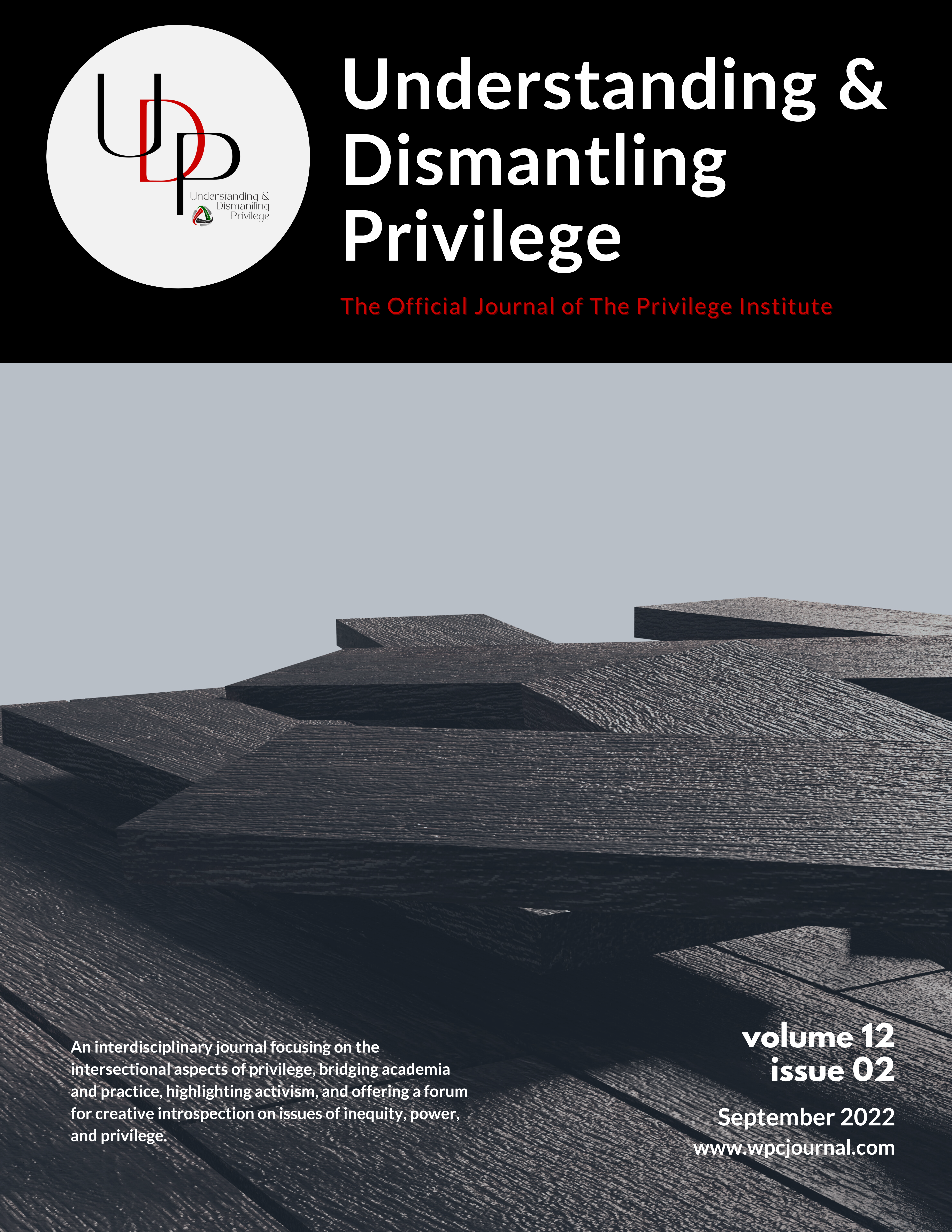Path to Empowerment: Strategies to Remedy Barriers to Care for African Nova Scotians Caught at the Intersection of Race and (dis)Ability
Path to Empowerment
Keywords:
intersectionality race disability empowermentAbstract
Abstract
Descriptions of intersectionality frequently rely on images of roads and intersections to represent how multiple systems of oppression converge. In these metaphors, roads represent the route by which negative forces of exploitation and oppression travel and interact. Roads and paths can also be used to represent an egress route taken to escape harm and move toward something better. This paper presents the voices of African Nova Scotians who have both identified patterns of harm and suffering within their community and pointed researchers in the direction of improved outcomes for African Nova Scotians living with (dis)Abilities including mental illness and addiction. Their shared observations and experiences identify key barriers to remove and bridges to be built if African Nova Scotians who are caught at the intersection of race and (dis)Ability are to have access to timely and effective care. The article concludes with discussion of pathways to empowerment for those caught at the intersection of race and disability oppression.
Additional Files
Published
How to Cite
Issue
Section
License
This journal is an academic publication. Its sole purpose is the dissemination of knowledge to as wide an audience as possible. The journal is free to individuals and institutions.
Copyrights for contributions published in this journal are retained by the authors, with first publication rights granted to the journal.
Copies of this journal or articles in this journal may be distributed for research or educational purposes free of charge and without permission. However commercial use of the journal or the articles contained herein is expressly prohibited without the written consent of the author.
NOTE TO AUTHORS:
A new model, the Creative Commons approach, with split copyright is rapidly evolving and worth considering.




